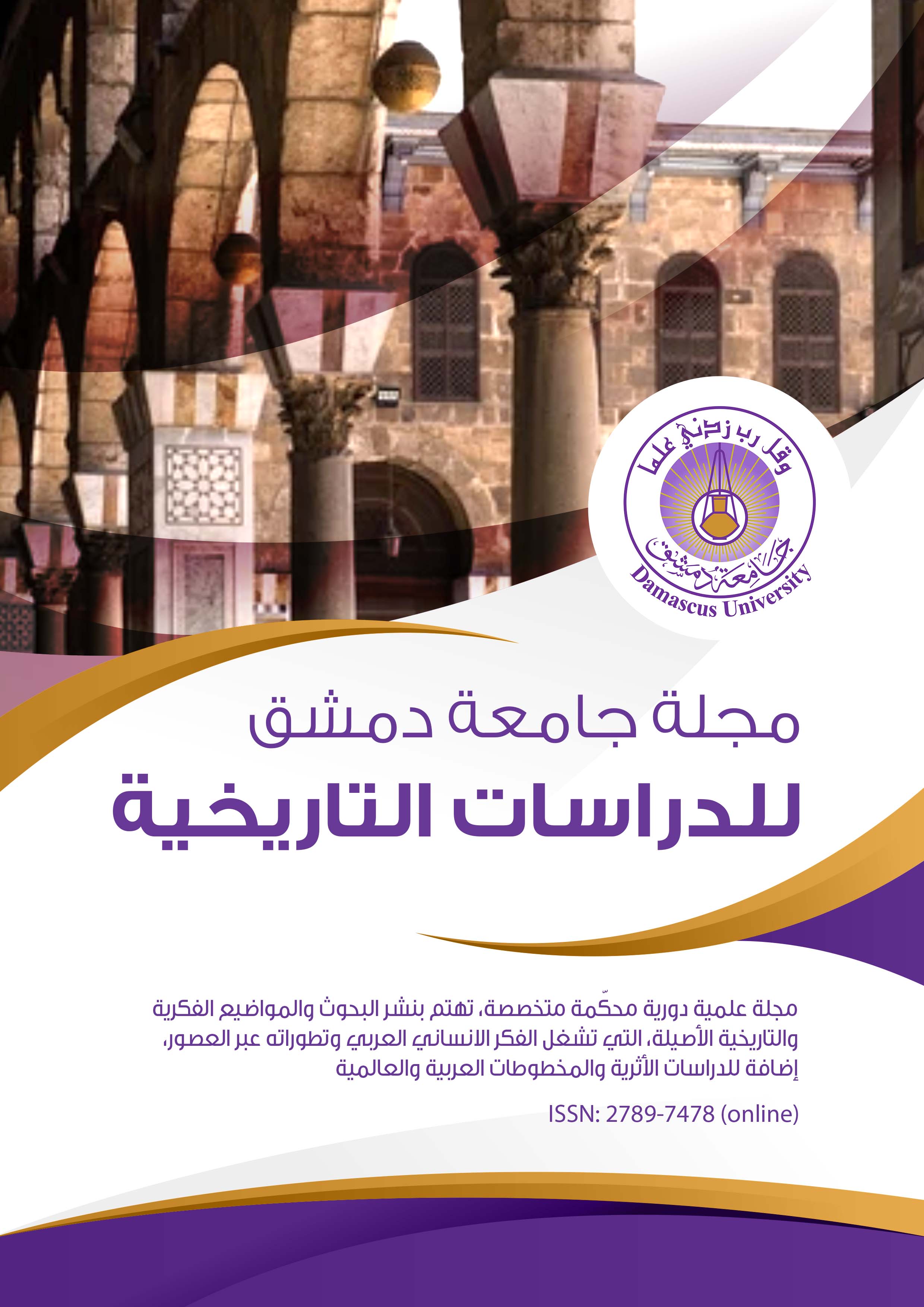اللازورد واستخداماته خلال عصر البرونز (المشرق العربي القديم أنموذجاً)
الكلمات المفتاحية:
اللازورد، استيراد، رمزية، النصوص الكتابية، المتحف الوطنيالملخص
أصبح لدى الإنسان القديم ثروة كافية وثراء دفعاه ليسعى إلى طلب مواد ثمينة لأغراض كمالية. ومن الجلي أنّ حجر اللازورد هو ضمن مواد مستوردة على كل من سورية القديمة ووادي النيل وبلاد الرافدين. وهنا تكمن أهمية حجر اللازورد ضمن مسيرة طويلة من حياة إنسان الشرق الأدنى القديم. الذي اقتصرت تجارته على استيراد مواد أساسية. فكان للازورد بتدرّجاته اللونية التي تتراوح بين اللون البنفسجي المزرّق إلى الأزرق الفاتح رمزية خاصة ترتبط بالآلهة، إذ سعى الملوك منذ أقدم العصور لاقتران اسمائهم مع أسماء الآلهة. وبالتالي كان للازورد حيّز مهم في الهدايا الدبلوماسية بين الملوك. واستناداً إلى دراسة القطع المحفوظة في متحف آثار الشرق القديم في المتحف الوطني بدمشق سيتمحور العرض حول التعريف بحجر اللازورد وتصنيعه واستخدامه وأهميته خلال المسيرة الطويلة للإنسان القديم ومجال استخداماته مع الإضاءة عليه من خلال النصوص الكتابية وبعض النماذج المحفوظة في المتحف الوطني بدمشق.

